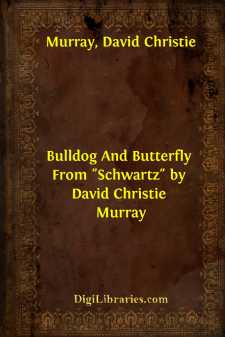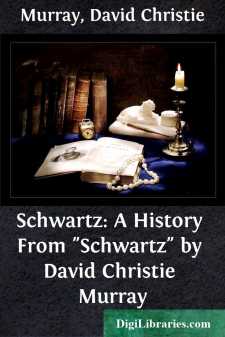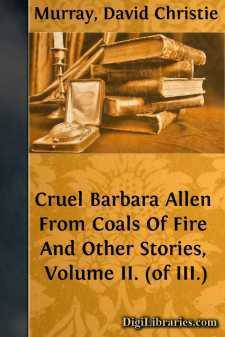Categories
- Antiques & Collectibles 13
- Architecture 36
- Art 48
- Bibles 22
- Biography & Autobiography 813
- Body, Mind & Spirit 142
- Business & Economics 28
- Children's Books 17
- Children's Fiction 14
- Computers 4
- Cooking 94
- Crafts & Hobbies 4
- Drama 346
- Education 46
- Family & Relationships 57
- Fiction 11829
- Games 19
- Gardening 17
- Health & Fitness 34
- History 1377
- House & Home 1
- Humor 147
- Juvenile Fiction 1873
- Juvenile Nonfiction 202
- Language Arts & Disciplines 88
- Law 16
- Literary Collections 686
- Literary Criticism 179
- Mathematics 13
- Medical 41
- Music 40
- Nature 179
- Non-Classifiable 1768
- Performing Arts 7
- Periodicals 1453
- Philosophy 64
- Photography 2
- Poetry 896
- Political Science 203
- Psychology 42
- Reference 154
- Religion 513
- Science 126
- Self-Help 84
- Social Science 81
- Sports & Recreation 34
- Study Aids 3
- Technology & Engineering 59
- Transportation 23
- Travel 463
- True Crime 29
Bulldog And Butterfly From "Schwartz" by David Christie Murray
Description:
Excerpt
Castle Barfield, Heydon Hey, and Beacon Hargate form the three points of a triangle. Barfield is a parish of some pretensions; Heydon Hey is a village; Beacon Hargate is no more than a hamlet. There is not much that is picturesque in Beacon Hargate, or its neighbourhood. The Beacon Hill itself is as little like a hill as it well can be, and acquires what prominence it has by virtue of the extreme flatness of the surrounding country. A tuft of Scotch firs upon its crest is visible from a distance of twenty miles in some directions. A clear but sluggish stream winds among its sedges and water-lilies round the western side of the Beacon Hill, and washes the edge of a garden which belongs to the one survival of the picturesque old times Beacon Hargate has to show.
The Oak House was built for a mansion in the days of Queen Elizabeth, but who built it nobody knows at this time of day, or, excepting perhaps a hungry-minded antiquary or two, greatly cares to know. The place had been partly pulled down, and a good deal altered here and there. Stables, barns, cow-sheds, and such other outhouses as are needful to a farm had been tacked on to it, or built near it; and all these appurtenances, under the mellowing hand of time and weather, had grown congruous, insomuch that the Oak House if stripped of them would have looked as bare even to the unaccustomed eye as a bird plucked of its feathers.
The house faced the stream, and turned its back upon the Beacon with its clump of fir-trees. It had chimneys enough for a village—an extraordinary wealth of chimneys—'twisted, fluted, castellated, stacked together in conclave or poised singly about the gables. The front of the house was crossed laterally and diagonally by great beams of black-painted oak. The windows, which are full of diamonded panes, were lowbrowed, deep-sunken, long, and shallow. The door had a porch, and this porch was covered with creepers. In summer time climbing roses and honeysuckle bloomed there. The garden ran right up to the house, and touched it all round. The fragrant sweet-william, nestling against the walls, looked as though it were a natural fringe. Without the faintest sense of primness, or even of orderliness, everything had an air of being precisely where it ought to be, and conveyed somehow a suggestion of having been there always. The house looked less as if it had been built than as if it had grown, and this feeling was heightened by the vegetable growth about it and upon it—the clinging ivy, the green house-leek, the purple and golden moss on the roofs and walls. In the course of its three hundred years the Oak House had stood long enough to be altogether reconciled to nature, and half absorbed by it.
In 1850—which, though it seem a long while ago, is well within human memory—and for many years before, the Oak House was tenanted by a farmer who bore the name of Fellowes, a sturdy and dogmatic personage, who was loud at the table of the market ordinary once a week, and for the most part silent for the rest of his life at home. The gray mare was the better horse. Excepting within doors at the Oak House, Fellowes ruled the hamlet. There were no resident gentry; the clergyman was an absentee; the tiny church was used only as a chapel-of-ease; and Fellowes was the wealthiest and most important personage for a mile or two. He was a little disposed to be noisy, and to bluster in his show of authority, and therefore fell all the more easily captive to his wife, who had a gift for the tranquil saying of unpleasant things which was reckoned quite phenomenal in Beacon Hargate. This formidable woman was ruled in turn by her daughter Bertha.
Bertha, unless looked at through the eyes of susceptible young manhood, would by no means be pronounced formidable....












